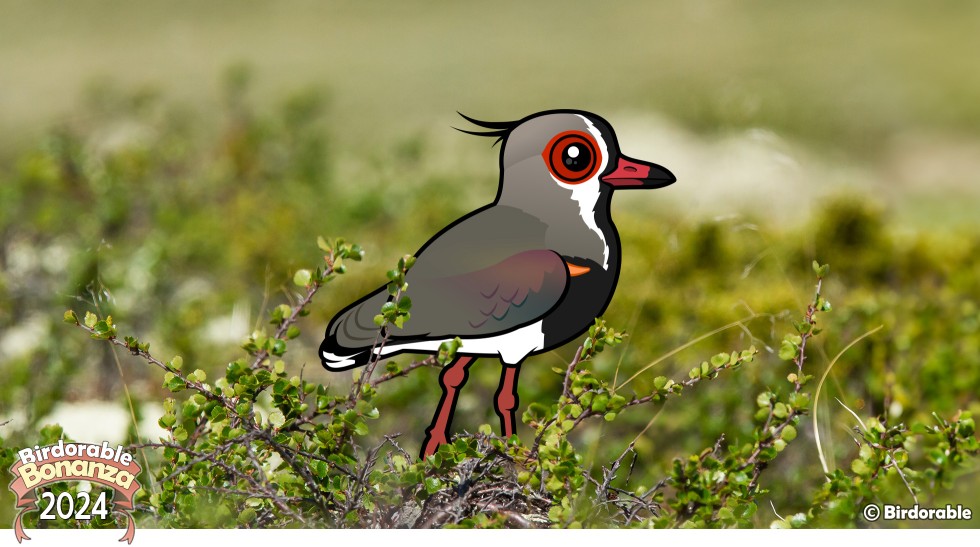2024 Birdorable Bonanza Bird #9
All About the Stunning Venezuelan Troupial

Today's new Birdorable Bonanza bird is a national species with its honored country right there in its name. Its the colorful, bold, charismatic Venezuelan Troupial!
The Venezuelan Troupial is a strikingly colorful bird and, as noted, the national bird of Venezuela. Easily recognized by its vibrant plumage and melodic songs, this member of the oriole and blackbird family (Icteridae) is a favorite among bird enthusiasts. Although very special to Venezuela, the bird is not limited to this country in its wider range; it can also be found in parts of Colombia and the Caribbean islands of Aruba, Curaçao, and Bonaire.
The Venezuelan Troupial is hard to miss with its vivid orange body, contrasting black head, back, wings, and tail, and bright white wing patches. The striking blue patch of bare skin around its eyes adds to its unique appearance. This combination of colors makes it one of the most beautiful birds in the Americas.
These birds prefer open woodlands, savannas, and scrublands where they forage for fruit, insects, and small animals. They are opportunistic feeders, which means they can adapt to a variety of food sources depending on what’s available. In urban and suburban areas, they’re sometimes seen visiting feeders stocked with fruit.

Venezuelan Troupial by Bjørn Christian Tørrissen [CC BY-SA 3.0]
One of the Venezuelan Troupial’s standout traits is its vocal ability. These birds are skilled mimics, capable of imitating other birds and even some non-avian sounds. Their repertoire of whistles and melodies is not just a way to communicate but also a means to establish territory and attract mates. Both males and females sing, often in duets, creating a delightful harmony.
Interestingly, many subspecies of the Venezuelan Troupial do not build their own nests. Instead, they are known as nest pirates, taking over nests constructed by other birds. This behavior can sometimes lead to conflict with other species. The female typically lays two to four eggs, which both parents help incubate and protect.
In its native Venezuela, the troupial holds cultural significance as a symbol of beauty and freedom. Its designation as the national bird highlights its importance to the country's identity. However, despite its beauty, habitat loss and illegal trapping for the pet trade have posed threats to its population. Fortunately, the species remains widespread and is currently listed as "Least Concern" by the IUCN.
Birdwatchers treasure the opportunity to see Venezuelan Troupials in the wild. Their striking appearance and lively personalities make them unforgettable for anyone lucky enough to spot one.
Birdorable Venezuelan Troupial Novelty Gifts & Apparel
Tomorrow’s Birdorable Bonanza brings a new wading wonder! This stork has a unique beak with a gap in the middle, perfect for cracking open snails. It can be found across wetlands in Asia. Can you guess what it is? Check out the silhouette and share your guesses below! 🤔











































































































